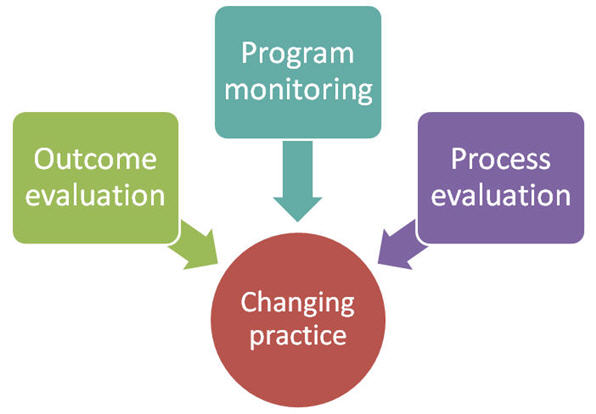Monitoring practice
The purpose of monitoring is to determine whether a treatment, service, or program is functioning as it was intended.
Three principal forms of monitoring and evaluation are normally cited:
- Process or Implementation evaluation (HOW was it achieved?)
- Outcome evaluation (WHAT was achieved)
- Program monitoring (CONTINUOUS EVALUATION)
Process evaluation explores HOW change is being implemented and delivered to the target population. It is less concerned with actual outcomes. For example, process evaluation might consider how the target population were recruited in regard to giving up smoking.
Outcome evaluation assesses WHAT the change has achieved, usually in terms of measures, for example, how many people managed to give up smoking as a result of the introduction of nicotine patches in addition to counselling.
Program monitoring undertakes CONTINUOUS EVALUATION of indicators of an intervention or program as part of the effective management of a service: how many patients are seen each month, the time taken for each consultation, and the length of the waiting list.

Irrespective of the type of evaluation, various methods of evaluation might be used:
- Interviews with patients and staff to explore individual perceptions
- Observation of patient care
- Surveys
- Cost-benefit analysis
- Practice audit
- Data sets for clinical outcomes
You can read more about methods of monitoring the effectiveness of evidence-based practice at an organisational level, and about documenting and promoting evidence-based efforts in Chapter 7 of Evidence-Based Practice in Nursing. Although nursing focused, the principles are generic. [18]
Read more from the Cochrane Review about audit and feedback. [19]
